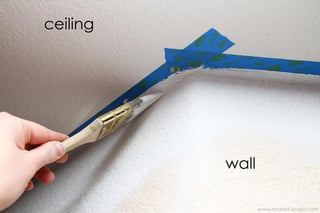I am about to renovate my room. A part of this plan includes painting all but one wall and the ceiling white, the other wall will be bright green. My walls are lightly textured and if this makes any difference, the original surface under most of the walls is plaster and lathe (with the exception of the wall being painted green, which is drywall). The surface I will actually be painting over will be the previous coating of yellow semi-gloss paint that is about 20 years old.
So here's my question... How do I get crisp, clean edges in the corners where two colors meet (keeping mind that these are semi-gloss walls and are textured)?


